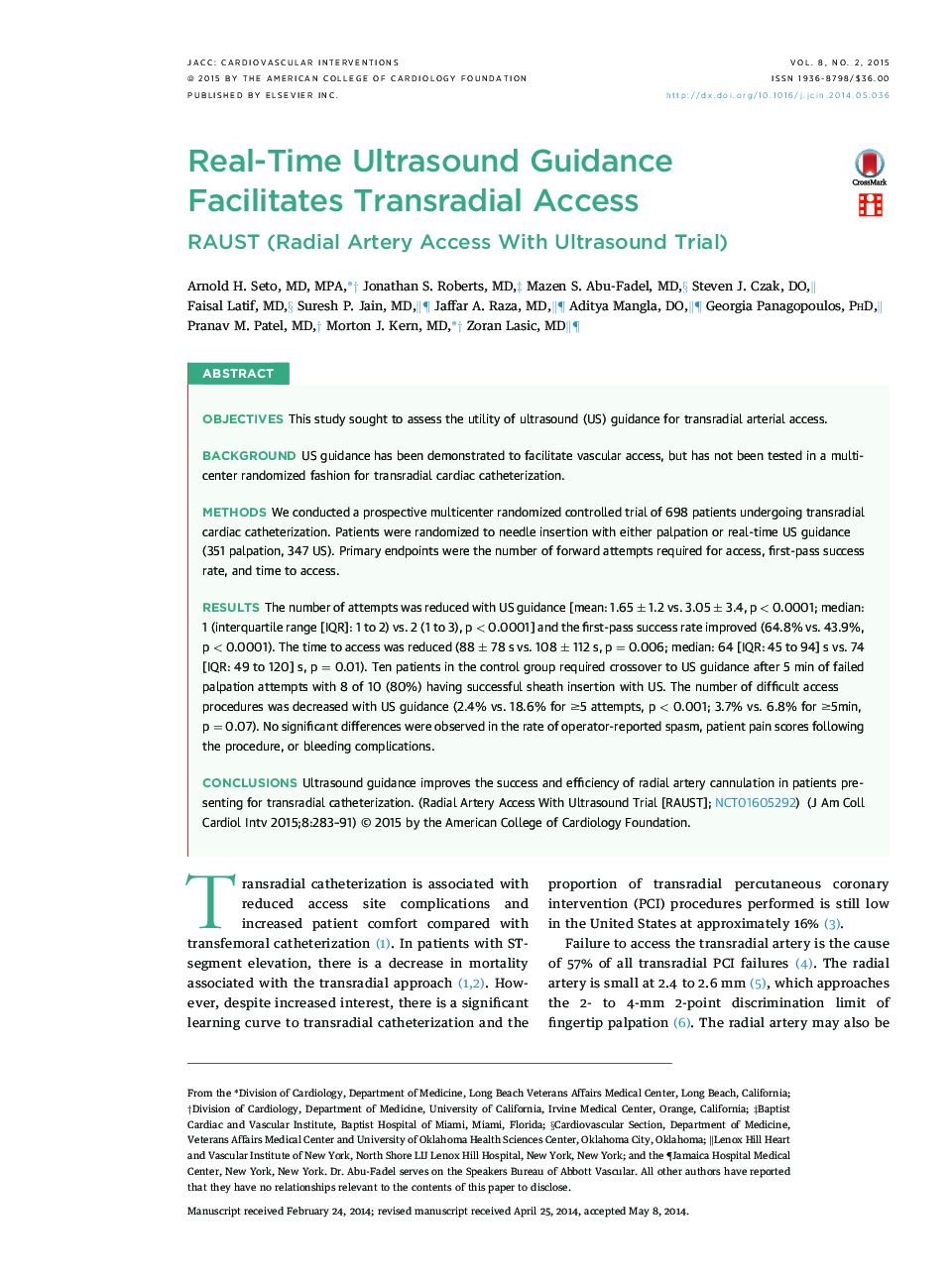| Article ID | Journal | Published Year | Pages | File Type |
|---|---|---|---|---|
| 5981156 | JACC: Cardiovascular Interventions | 2015 | 9 Pages |
ObjectivesThis study sought to assess the utility of ultrasound (US) guidance for transradial arterial access.BackgroundUS guidance has been demonstrated to facilitate vascular access, but has not been tested in a multicenter randomized fashion for transradial cardiac catheterization.MethodsWe conducted a prospective multicenter randomized controlled trial of 698 patients undergoing transradial cardiac catheterization. Patients were randomized to needle insertion with either palpation or real-time US guidance (351 palpation, 347 US). Primary endpoints were the number of forward attempts required for access, first-pass success rate, and time to access.ResultsThe number of attempts was reduced with US guidance [mean: 1.65 ± 1.2 vs. 3.05 ± 3.4, p < 0.0001; median: 1 (interquartile range [IQR]: 1 to 2) vs. 2 (1 to 3), p < 0.0001] and the first-pass success rate improved (64.8% vs. 43.9%, p < 0.0001). The time to access was reduced (88 ± 78 s vs. 108 ± 112 s, p = 0.006; median: 64 [IQR: 45 to 94] s vs. 74 [IQR: 49 to 120] s, p = 0.01). Ten patients in the control group required crossover to US guidance after 5 min of failed palpation attempts with 8 of 10 (80%) having successful sheath insertion with US. The number of difficult access procedures was decreased with US guidance (2.4% vs. 18.6% for â¥5 attempts, p < 0.001; 3.7% vs. 6.8% for â¥5min, p = 0.07). No significant differences were observed in the rate of operator-reported spasm, patient pain scores following the procedure, or bleeding complications.ConclusionsUltrasound guidance improves the success and efficiency of radial artery cannulation in patients presenting for transradial catheterization. (Radial Artery Access With Ultrasound Trial [RAUST]; NCT01605292)
